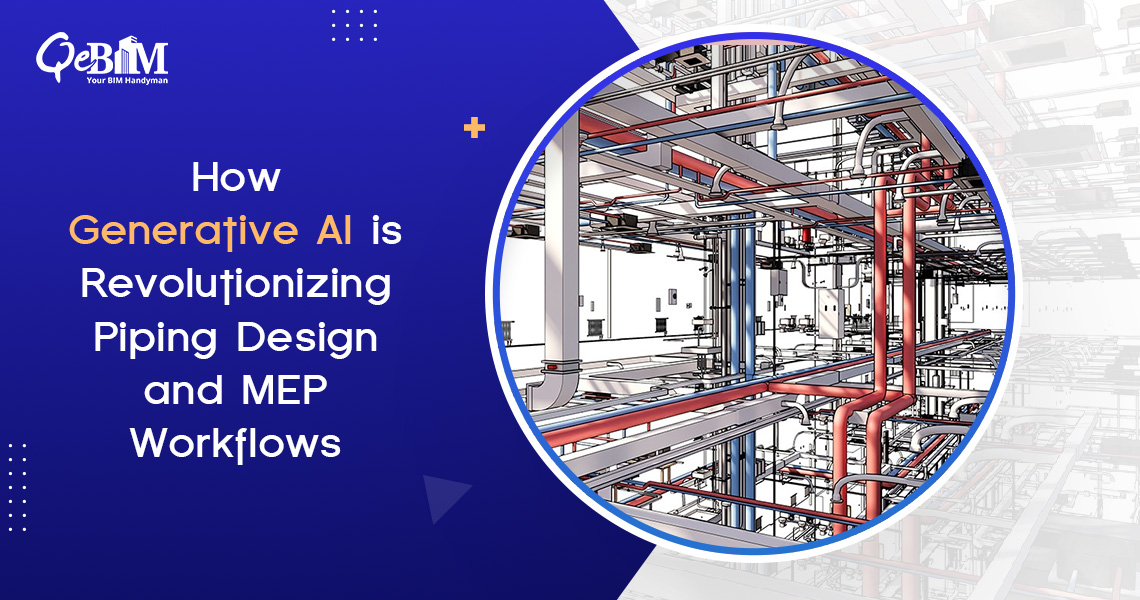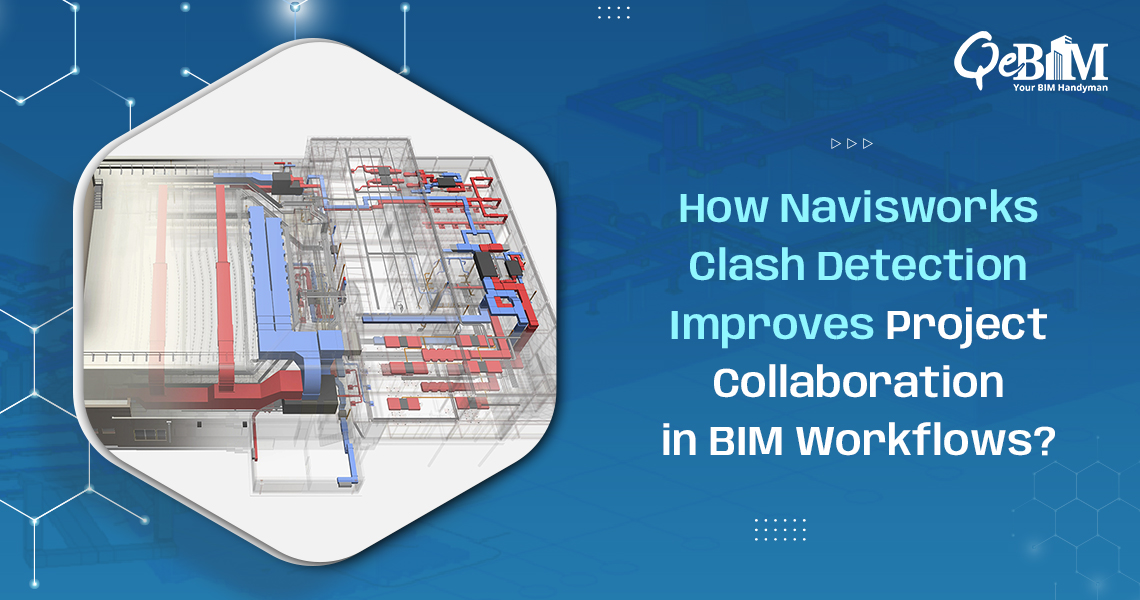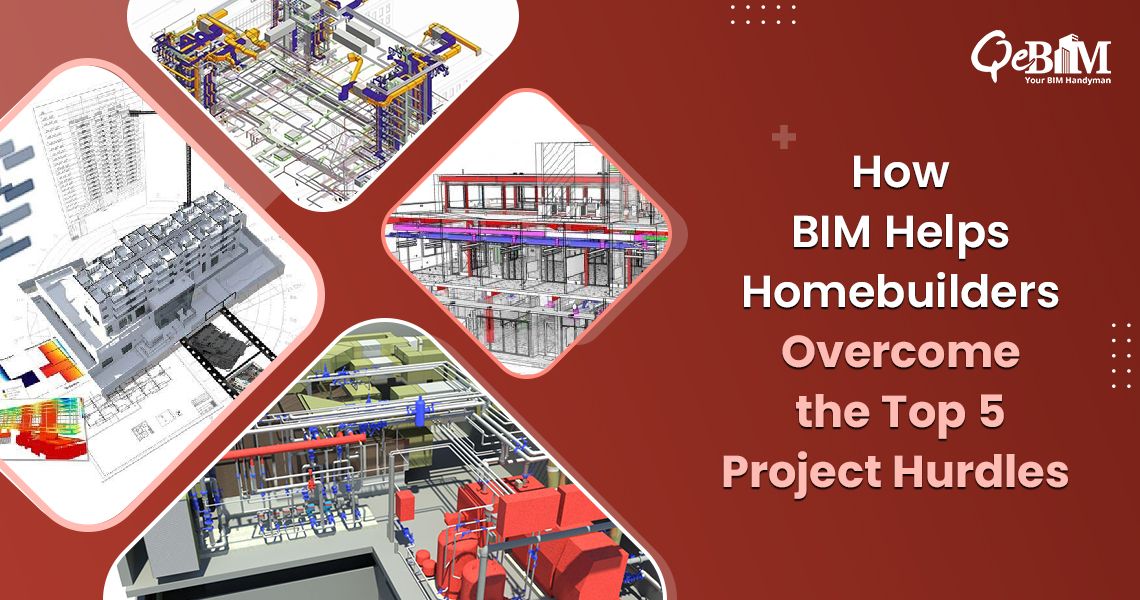The AEC industry is experiencing a significant technological shift and piping design—a critical aspect of the MEP systems—is no exception. Among the most promising innovations is Generative AI, an intelligent technology that has the potential to reshape the way many engineers and designers approach the piping layouts, material choices and stress analysis. Here’s a detailed look at what generative AI is, how it applies to piping design and what actually the firms need to consider when adopting it.
What is Generative AI?
Generative Artificial Intelligence refers to the AI systems capable of creating designs, models or solutions based on the defined parameters and datasets. Unlike traditional software, which relies on the predefined commands, the generative AI learns the patterns from the historical data and applies them to generate the optimized solutions. In the design disciplines, this means that the engineers can input the project constraints such as space, flow rates, materials or code compliance—and the AI will produce multiple design iterations or suggest the best possible configuration.
How It Can Be Implemented in Piping Design?
Generative AI can transform various stages of the piping design workflow. Let’s break it down:
1) Automating Piping Layout and Routing
Traditionally, the piping layouts requires the manual effort, iterative coordination and even the extensive reviews. Generative AI simplifies this by quickly generating the optimal routing based on the constraints like space availability, flow requirements and clash-free coordination with other services. It integrates with the BIM platforms thereby making the clash detection faster and more proactive—an advantage especially when combined with the BIM Coordination Services.
2) Material Selection
Material choices significantly affects the cost, durability and performance. The Generative AI can analyze the project data, operating conditions as well as the historical usage to recommend the best material for each section of the piping network. For example, it can suggest corrosion-resistant alloys for high-pressure lines or even the cost-effective PVC for the low-pressure systems hence reducing the procurement time and improving the long-term efficiency.
3) Pipe Stress Analysis
Pipe stress analysis guarantees that piping systems can endure internal pressure, thermal expansion and external forces. The Generative AI can simulate the different scenarios and recommend the design adjustments to minimize the stress concentration. Instead of running isolated simulations, the engineers can access the AI-driven insights in real time thereby enabling them to fine-tune the layouts before even the construction begins.
4) 3D Modeling and Visualization
Generative AI enhances the 3D modeling process by automatically generating the accurate piping models in the BIM environments. Designers can visualize the different routing options, detect potential conflicts and assess the system performance early in the project. This feature is particularly beneficial for the firms offering the MEP BIM Services, as it combines the automation with accuracy and reduces the time spent on the repetitive modeling tasks.
Advantages of Generative AI in Piping Design
The adoption of generative AI in piping design comes with numerous advantages:
- Speed and Efficiency: AI reduces the time needed for the layout creation, stress checks and revisions hence enabling the faster project delivery.
- Clash-Free Coordination: Real-time generation and clash avoidance improves the overall project coordination with other trades like HVAC and electrical.
- Cost Optimization: Automated material selection and route optimization minimizes the waste and reduces the procurement costs.
- Enhanced Accuracy: AI-driven recommendations are based on the data and simulation, reducing the risk of the design errors.
- Design Innovation: By generating the multiple design options, AI encourages the exploration of innovative solutions that might be overlooked manually.
Key Considerations When Using Generative AI
While the potential is enormous, adopting generative AI in piping design comes with the considerations:
- Data Quality: AI relies heavily on the accurate historical data and project-specific parameters. The poor-quality or insufficient data can lead to the unreliable outputs.
- Human Oversight: AI cannot replace the engineering judgment. The designs generated by AI must be reviewed for the code compliance, safety along with the constructability.
- Integration with Existing Systems: Compatibility with the existing BIM tools and workflows is crucial for seamless implementation.
- Training and Adoption: Teams must be trained to understand the AI outputs and make informed decisions hence ensuring the technological complements rather than complicating the workflows.
- Regulatory Approval: Many regions still requires the human-verified documentation for compliance and safety, so AI outputs must be validated before the submission.
Final Thoughts
Generative AI is redefining the piping design by automating the complex processes, reducing manual the effort and enabling the engineers to focus on higher-value decisions. It integrates naturally with the BIM platforms, enhancing both the design quality and collaboration. Firms that embraces this technology will gain an edge in delivering the efficient, clash-free and cost-effective piping systems.





